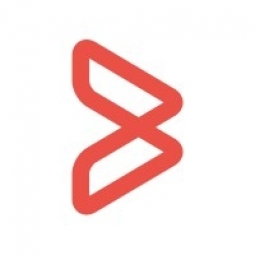Seeing is Achieving: How Visualization Helps a Major European Bank Manage More Mainframe Code Better, Faster and with Fewer People

Customer Company Size
Large Corporate
Region
- Europe
Product
- Compuware Topaz
- Compuware Xpediter
- Compuware File-AID
- Compuware Abend-AID
Tech Stack
- Mainframe
- COBOL
- Java
Implementation Scale
- Enterprise-wide Deployment
Impact Metrics
- Productivity Improvements
- Cost Savings
Technology Category
- Application Infrastructure & Middleware - Data Exchange & Integration
Applicable Industries
- Finance & Insurance
Applicable Functions
- Discrete Manufacturing
- Quality Assurance
Use Cases
- Predictive Maintenance
- Process Control & Optimization
Services
- Software Design & Engineering Services
- System Integration
About The Customer
The customer is one of Europe's largest private banks. The bank has stopped developing new mainframe applications and allowed its mainframe development staff to shrink by about 30% through attrition. However, the bank's mainframe development needs are increasing. The use of the bank's mainframe applications and data by new and existing distributed, web, and mobile applications is increasing. Developers no longer build new COBOL applications but must constantly modify mainframe code to assist non-mainframe applications. The bank's mainframe applications are critical to everything it does and everything customers and regulators expect. Mainframe test/QA must be rigorous and fast. If the testing process uncovers a problem, it must be rapidly and accurately diagnosed, fixed, and tested again.
The Challenge
The bank, one of Europe's largest private banks, is facing a common IT management challenge. The bank has stopped developing new mainframe applications and allowed its mainframe development staff to shrink by about 30% through attrition. However, the bank's mainframe development needs are increasing. The use of the bank's mainframe applications and data by new and existing distributed, web, and mobile applications is increasing. Developers no longer build new COBOL applications but must constantly modify mainframe code to assist non-mainframe applications. The bank can't wait forever for coding changes to be completed. Competition in the financial services market is intense, making time-to-benefit important, whether for customers' mobile experiences or new capabilities for staff, and putting pressures on the mainframe software development lifecycle. That lifecycle has to produce defect-free code. The bank's mainframe applications are critical to everything it does and everything customers and regulators expect. Mainframe test/QA must be rigorous and fast. If the testing process uncovers a problem, it must be rapidly and accurately diagnosed, fixed, and tested again.
The Solution
The solution, according to R.C., has been embracing visualization with Compuware tools like Topaz, Xpediter, File-AID, and Abend-AID, providing developers with visually intuitive insight into application relationships, runtime behaviors, and problems in programming logic flows. Issues that previously took hours to find now take developers minutes with these visualization tools, which also help developers understand in advance the implications of coding changes to avoid re-coding and re-testing. In one example, given the ability to graphically visualize a mainframe application’s runtime activity in high-level production and “drill down” to a detailed view, R.C.’s team noticed a batch process was completing later and later. If the trend continued, the process would not complete before the open of business, spelling trouble for the bank. Using Compuware’s Topaz for Program Analysis, R.C.’s team zeroed in on a sort-program call repeating hundreds of thousands of times a night. A simple code fix reduced that egregious performance bottleneck to a single call.
Operational Impact
Quantitative Benefit

Case Study missing?
Start adding your own!
Register with your work email and create a new case study profile for your business.
Related Case Studies.

Case Study
Real-time In-vehicle Monitoring
The telematic solution provides this vital premium-adjusting information. The solution also helps detect and deter vehicle or trailer theft – as soon as a theft occurs, monitoring personnel can alert the appropriate authorities, providing an exact location.“With more and more insurance companies and major fleet operators interested in monitoring driver behaviour on the grounds of road safety, efficient logistics and costs, the market for this type of device and associated e-business services is growing rapidly within Italy and the rest of Europe,” says Franco.“The insurance companies are especially interested in the pay-per-use and pay-as-you-drive applications while other organisations employ the technology for road user charging.”“One million vehicles in Italy currently carry such devices and forecasts indicate that the European market will increase tenfold by 2014.However, for our technology to work effectively, we needed a highly reliable wireless data network to carry the information between the vehicles and monitoring stations.”

Case Study
Safety First with Folksam
The competitiveness of the car insurance market is driving UBI growth as a means for insurance companies to differentiate their customer propositions as well as improving operational efficiency. An insurance model - usage-based insurance ("UBI") - offers possibilities for insurers to do more efficient market segmentation and accurate risk assessment and pricing. Insurers require an IoT solution for the purpose of data collection and performance analysis

Case Study
Smooth Transition to Energy Savings
The building was equipped with four end-of-life Trane water cooled chillers, located in the basement. Johnson Controls installed four York water cooled centrifugal chillers with unit mounted variable speed drives and a total installed cooling capacity of 6,8 MW. Each chiller has a capacity of 1,6 MW (variable to 1.9MW depending upon condenser water temperatures). Johnson Controls needed to design the equipment in such way that it would fit the dimensional constraints of the existing plant area and plant access route but also the specific performance requirements of the client. Morgan Stanley required the chiller plant to match the building load profile, turn down to match the low load requirement when needed and provide an improvement in the Energy Efficiency Ratio across the entire operating range. Other requirements were a reduction in the chiller noise level to improve the working environment in the plant room and a wide operating envelope coupled with intelligent controls to allow possible variation in both flow rate and temperature. The latter was needed to leverage increased capacity from a reduced number of machines during the different installation phases and allow future enhancement to a variable primary flow system.

Case Study
Automated Pallet Labeling Solution for SPR Packaging
SPR Packaging, an American supplier of packaging solutions, was in search of an automated pallet labeling solution that could meet their immediate and future needs. They aimed to equip their lines with automatic printer applicators, but also required a solution that could interface with their accounting software. The challenge was to find a system that could read a 2D code on pallets at the stretch wrapper, track the pallet, and flag any pallets with unread barcodes for inspection. The pallets could be single or double stacked, and the system needed to be able to differentiate between the two. SPR Packaging sought a system integrator with extensive experience in advanced printing and tracking solutions to provide a complete traceability system.

Case Study
Transforming insurance pricing while improving driver safety
The Internet of Things (IoT) is revolutionizing the car insurance industry on a scale not seen since the introduction of the car itself. For decades, premiums have been calculated using proxy-based risk assessment models and historical data. Today, a growing number of innovative companies such as Quebec-based Industrielle Alliance are moving to usage-based insurance (UBI) models, driven by the advancement of telematics technologies and smart tracking devices.

Case Study
MasterCard Improves Customer Experience Through Self-Service Data Prep
Derek Madison, Leader of Business Financial Support at MasterCard, oversees the validation of transactions and cash between two systems, whether they’re MasterCard owned or not. He was charged with identifying new ways to increase efficiency and improve MasterCard processes. At the outset, the 13-person team had to manually reconcile system interfaces using reports that resided on the company’s mainframe. Their first order of business each day was to print 20-30 individual, multi-page reports. Using a ruler to keep their place within each report, they would then hand-key the relevant data, line by line, into Excel for validation. “We’re talking about a task that took 40-80 hours each week,” recalls Madison, “As a growing company with rapidly expanding product offerings, we had to find a better way to prepare this data for analysis.”


